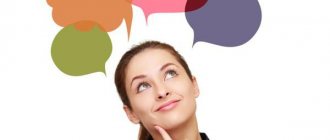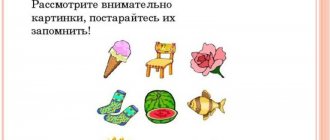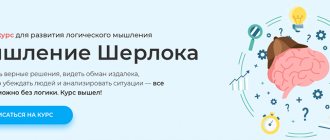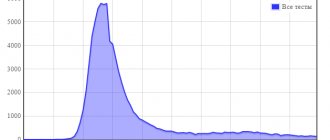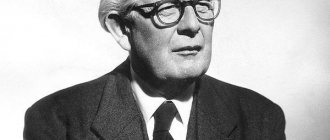Greetings, friends!
Thinking is a multifaceted process for which there are a large number of different definitions in psychology. In general, this term refers to the process of mental processing of information based on a person’s accumulated knowledge and axiomatic ideas about the world around him. In the process of mental activity, a person analyzes incoming information, draws conclusions, expands and complements his picture of the world.
Each of us is interested in developing and improving our thinking skills. They allow us to analyze the situation more accurately and quickly, draw the right conclusions and make the right decisions. To understand how to develop thinking, you must first find out what it is, how it is structured, how it works and what it depends on. Today we will examine these issues in detail, after which we will consider several effective exercises.
What is thinking?
Thinking is what makes us human. It is the ability to think analytically, compare facts and expand our picture of the world through logical conclusions that distinguishes us from animals. There are several types of thinking that differ in how a person analyzes information and draws conclusions. The most common types of thinking are:
- analytical – the ability to analyze a large number of facts, find complex relationships between various phenomena;
- logical – the ability to correctly compare facts, determine their significance and reliability, and make correct conclusions;
- deductive - the ability to draw the right conclusions in a specific situation, based on general knowledge (the principle of “from general to specific”);
- inductive – the ability to draw correct general conclusions based on a particular case (the principle “from the particular to the general”);
- systemic - a special approach to understanding the world around us, aimed at organizing and optimizing available knowledge;
- creative is a special type of thinking that allows you to generate new ideas, find non-standard solutions, and make discoveries.
All types of thinking can work with varying degrees of effectiveness. The good news is that they can be developed, the main thing is to know how to do it. But before moving on to specific exercises, let’s take a closer look at how thought processes work.
Varieties of thinking
How to develop memory in a child of preschool and school age
In psychology, thinking is conventionally divided into logical and figurative - these are 2 main branches of development, for which different hemispheres are responsible. It can also be theoretical and practical, open and intuitive, generally accepted and independent. There are 7 main types of thinking:
- Prological. Primitive, appears in the first stages of the formation of human thoughts;
- Creative. It lies in the opportunity to move away from generally accepted concepts and create something new;
- Verbal-logical. Based on verbal communication.
- Visual-figurative. Assumes awareness of what is happening in general and its details;
- Visually effective. It involves not only awareness, but also specific actions;
- Practical. Assumes the presence of a clear goal and algorithm of actions;
- Theoretical. It lies in the possibility of not only finding a solution, but also determining an algorithm of actions that will help solve a whole series of similar problems.
How does thinking work?
Every thought that exists in our minds represents an associative connection between several images and concepts. Individual images that appear in our thoughts seem to pull invisible strings, forcing us to remember other concepts associated with them. As a result, a kind of cause-and-effect relationship arises, provoking an endless process of replacing some concepts and images with others.
By studying how the thought process works, scientists found that it consists of several key components:
- Analysis
. Dividing a complex essence into simplest images. - Synthesis
. Combining the simplest components interconnected into complex objects and phenomena. - Comparison
. Comparison of individual entities, search for similarities and differences. - Classification
. Distribution of objects into categories based on the presence of certain characteristics. - Abstraction
. Isolating the most important features while ignoring other characteristics. - Generalization
. Grouping of disparate objects based on the presence of similar characteristics. - Concretization
. Identification of one object with clarification of its distinctive characteristics.
All these processes serve one purpose - to help us make the right decisions based on the available data. As a result of cognitive and mental activity, complex connections are formed in our minds between various images, from which the overall picture of the world is formed. And the decision made in each specific situation is the result of processing all the information we have ever received.
Logical problems of the main complex
Problem 6
Try to establish the principle of constructing the specified sequence:
8 2 9 0 1 5 7 3 4 6 Answer
The sequence of numbers is based on the alphabetical order of their names (eight, two, nine, zero, etc.).
Problem 7
Imagine a ten-kilometer bridge across the strait. The maximum load for it is 25 tons. A truck weighing exactly 25 tons started from the beginning of this bridge. The car continues moving towards the opposite edge. The balance of the bridge has not yet been disturbed. Suddenly, when the truck reached the middle of this overpass, a sparrow sat on it with its weight.
Question for you: will the weight of the bird lead to imbalance and destruction of the bridge?
Answer
It won't. Since the truck covered the path to the middle of the bridge, which is equal to 5 km, the fuel consumption was several times greater than the weight of the bird.
Problem 8
At the same time, two people approached the water channel. A boat designed for only one person will help you get to the other shore. However, without outside participation, both crossed to the opposite shore on this boat.
How did people cope?
Answer
People approached the opposite banks of the water channel.
Problem 9
The brave warrior was captured by the Sultan's servants. The Sultan ordered the daredevil to be sent to prison, where two guards would be with him at all times. One guard is extremely truthful in his conversation, and the second is lying. Inside the dungeon there were two closed entrances. If you enter one, you will choose “captivity forever,” and in the other, “liberation.” The Sultan suggested that the warrior choose one entrance: if it turns out to be “liberation,” then the captive is free.
The warrior was allowed to ask the guards only once. That is, one question for two guards. The prisoner does not know which of them is a liar and which is truthful. The guards undoubtedly know which entrance will give the warrior liberation.
What question would a warrior ask one of the guards to reliably determine the entrance that signifies “release”?
Answer
The warrior will ask only one question to any of the guards: “If I ask your colleague to point to the “liberation” entrance, where will he direct me?” In both situations, the warden will point to the “entrance to bondage.”
10 task
There are ten springs with dead water in the forest: from the first to the tenth. Dead water from the first to ninth springs is available to everyone, and the tenth spring is in the power of Koshchei in a cave into which he does not allow anyone. By taste and color, dead water cannot be distinguished from ordinary water, but a sip of water from a spring means death. Only water from the spring with the number above will save you. Therefore, nothing will save the one who initially drinks the tenth water.
Ivanushka challenged Koshchei. We agreed to bring a cup of water with us and let our opponent drain it. Koshchei’s joy knew no bounds: “Hurray! I will pour the tenth poison, and Ivanushka will not be saved! At the same time, I’ll drink what Ivanushka gives, then I’ll drink the tenth poison and stay alive!”
On the agreed day, the rivals collided. An honest exchange of cups followed. The contents have been drunk. At the same time, Koschey died, but Ivanushka survived.
How did Ivanushka defeat Koshchei?
Answer
Ivanushka offered Koshchei ordinary water. And Koschey, according to incorrect assumptions, “washed it down” with his own tenth poison. Before meeting with his opponent, Ivanushka drank water from any spring. It turned out that he washed down the poison with Koshcheev tenth, which led to the neutralization of the poison.
How to develop thinking?
In order to develop your thinking, you need to systematically work through each of the components listed above, improving in such areas as:
- critical thinking (the ability to analyze a situation, breaking it down into individual facts, comparing and contrasting them, determining their plausibility and reliability);
- ability to synthesize (the ability to combine a large number of facts into one complex entity, object or process);
- the ability to compare events and facts, finding significant differences and similarities;
- ability to classify (an important skill necessary for remembering new information);
- abstraction (highlighting key characteristics and discarding irrelevant ones);
- the ability to generalize (collect disparate objects into groups, combining them according to common characteristics);
- the ability to specify (concentrate attention on a specific image).
By developing in all of these directions, you can significantly improve the quality of tactical and strategic thinking, which will allow you to better plan your actions on the way to your goal in the future. There are a wide variety of exercises for this. We will look at 10 of them, which do not require special skills or special tools - just your desire and determination.
Types of thinking: stages of child development
Development of thinking in preschool children. The following types of thinking dominate in a preschooler:
- objective-active, which develops spurred by the child’s imagination; typical for children aged 1 to 2 years.
- visual-figurative, which develops on the basis of the child’s existing knowledge; typical for children aged 3 to 4 years.
- verbal-logical, since speech begins to play an important role in achieving any goal of the child; typical for children of older preschool age - 5-7 years.
Subject-effective thinking
The youngest preschoolers love to break toys. They are not aggressors releasing negative energy, they are explorers. The objects that surround the child are interesting to him, he wants to touch them and take them apart. One action follows another. Speech is not important here, and the little ones do not yet have the ability to speak and explain their actions. The child thinks with his hands, exploring the properties of each object.
Visual-figurative type of thinking
When a child turns three or four years old, he already owns certain images that he actively uses in play. At the same time, objective-active thinking occurs; visual-figurative thinking simply becomes its continuation.
Verbal and logical thinking
At the age of five, preschoolers are already actively chatting, can analyze information, and give a detailed answer. They use speech in play and in everyday life; children remember that with the help of speech it is easier to achieve the desired result.
Abstract-symbolic
With this thinking, the child can separate the essential properties, signs of an object from the unimportant. The baby understands that a specific object can be replaced by another if it has the same characteristic features.
Creative thinking (creativity)
Creativity knows no boundaries or age differences. Whether at two or six years old, a child can enthusiastically build castles with blocks, knead plasticine, or move a brush with paint over a sheet of paper. At the same time, the child makes or draws what he wants, showing imagination. The child also sings, plays music, and dances with his soul.
Exercises for developing thinking
Reading
This is a simple and at the same time effective way to develop thinking. While reading, we intently analyze the flow of incoming information. It is useful to read both educational literature and fiction. In the first case, you can broaden your horizons, and in the second, you can gain valuable experience by thinking about and analyzing the actions of the main characters of a literary work. Reading gives new knowledge, increases the level of intelligence, develops memory and helps in self-development.
Development of imaginative thinking
Warm greetings, dear Khabra residents!
In my debut article, I want to tell you about exercises and games for the development of imaginative thinking, which will be useful not only for people in creative professions: unlike exercises for the development of imagination, in which the right hemisphere dominates, pumping up imaginative thinking actively uses analytical abilities, and This is already a symbiosis of two hemispheres. Therefore, these exercises are perfect not only for obtaining any fruits for people whose work is in some way connected with figurative information, but also for any person who wants to have a sharp mind and well-established interaction between both hemispheres of the brain. Exercises should be performed in a comfortable environment: no time limit, no competitive motivation and criticism of actions, an average degree of achievement motivation. The exercises value not only the number of answers produced, but also their originality. You can test your imaginative thinking in one of the chapters of the wonderful manual “Diagnostics and Activation of Creative Abilities.”
Training on home-grown raw materials along the way (squiggles, blots, doodles, etc.) is encouraged. The attached examples to the exercises, which do not have a link to the author, were completed by me.
Each exercise can be devoted to a separate article (which I will try to do in the future), but for now a quick overview of the main ones.
Droodles
One of the advertising campaigns of the Brazilian school of creativity was based on this simple exercise, when a simple line or figure needs to be painted at your discretion:
You can use simple figures replicated in advance on A4 sheet or build on your own spontaneous lines during the exercise.
Blots
Unlike the previous exercise, where we used lines, this one requires inspiration from solid figures: blots, spots, clouds and any other abstractions:
Blots don’t have to be monochrome: look at the series of works based on colored spots created by the wonderful Portuguese illustrator Filipe dos Santos:
Figurative expression
The essence of the exercise is to tell a verbal semantic unit (phrase, sentence) in a figurative version.
In some ways this exercise is reminiscent of good old puzzles. Indeed, such activities often make excellent “rebus” logos: Authors: Richard Fonteneau, Jens Wickelgren, s-farm, Helms Workshop
If you don’t want to waste time thinking about a phrase, you can use aphorisms, proverbs, slogans, titles and phrases from songs , films and other famous expressions:
Illustrations that display verbal expressions and incidents such as “The bear collects mushrooms in the fox”, “Chickens are not drying”, “The fish drank” and others are popular on the Internet:
Author werebober
Semiotics will help those wishing to study in more detail the relationship between sign and meaning.
In figurative likeness
In this exercise you need to find figurative synonyms for the object as a whole or its individual parts. For example: violin ~ waist ~ bottle.
The chain can be either centered (synonyms follow from the original option), or sequential (synonyms follow from the previous option), or chaotic (any sequence is not followed).
You can complicate the exercise and make chains not only according to figurative similarity, but also according to functional, applied, and others. This technique is called the visual matrix.
Kaleidoscope
The essence of this game is very simple and is based on the relationship between an object and our projection onto it. In this game we simply juggle our projections onto what we observe. A well-worn example is the glass is half empty or half full.
It is enough to simply write out the options verbally. For those who know how to draw, more opportunities open up: you can take a new look at familiar personalities, familiar processes, everyday life and other aspects of our lives:
From Britney's discharge album
This is why resources with similar fruits are so popular (demotivators, blogs, for example, Wake Up, groups on social networks): a fresh look at hackneyed images, opinions, processes always surprises and makes you laugh.
This concludes my review. I will be glad to receive comments in which you will tell about techniques and exercises not mentioned in this article.
Training
The most effective way to develop thinking in a short time is to undergo training. I present to your attention the course “Development of Thinking” from Vikium.
You will learn:
- make the right decisions with lightning speed;
- clearly argue in disputes and convince;
- construct your speech competently and logically;
- count complex examples in your head with ease.
The course includes:
- thinking development program;
- theoretical video lectures;
- practical exercises and assignments
- simulators for the development of logic
This course will help:
- improve and speed up thinking;
- develop analytical skills;
- think critically in any situation;
- make unconventional decisions.
We develop analytics
We need thinking in order to solve assigned problems without errors. Knowing how to develop analytical thinking allows you to improve your understanding of the world and your ability to find a logical and more correct solution. How to develop it in an adult.
- For each question, come up with several possible answers.
- For one problem, ask leading questions that will help speed up decision making.
- Analyze the chosen option from all sides, find its strengths and weaknesses.
- Make it a rule to analyze what you see and hear, this will gradually increase the speed of thinking and improve the memorization of information.
- Sort the information you receive into categories: very important, important, moderately important, unnecessary. The same applies to current affairs. Systematization increases the speed of finding the correct answer and helps you quickly deal with current affairs.
- Solve logical problems, start with the simplest ones, in order to understand how to do it correctly.
Exercises to develop visual and effective thinking
- The simplest, but very effective task for developing this type of thinking is collecting construction sets. There should be as many parts as possible, at least 40 pieces. You can use visual instructions.
- No less useful for the development of this type of thinking are various puzzles and puzzles . The more details there are, the better.
- Make 2 equal triangles from 5 matches, 2 squares and 2 triangles from 7 matches.
- Turn into a square by cutting once in a straight line, a circle, a diamond and a triangle.
- Make a cat, a house, a tree from plasticine.
- Without special instruments, determine the weight of the pillow you are sleeping on, all the clothes you are wearing, and the size of the room you are in.
